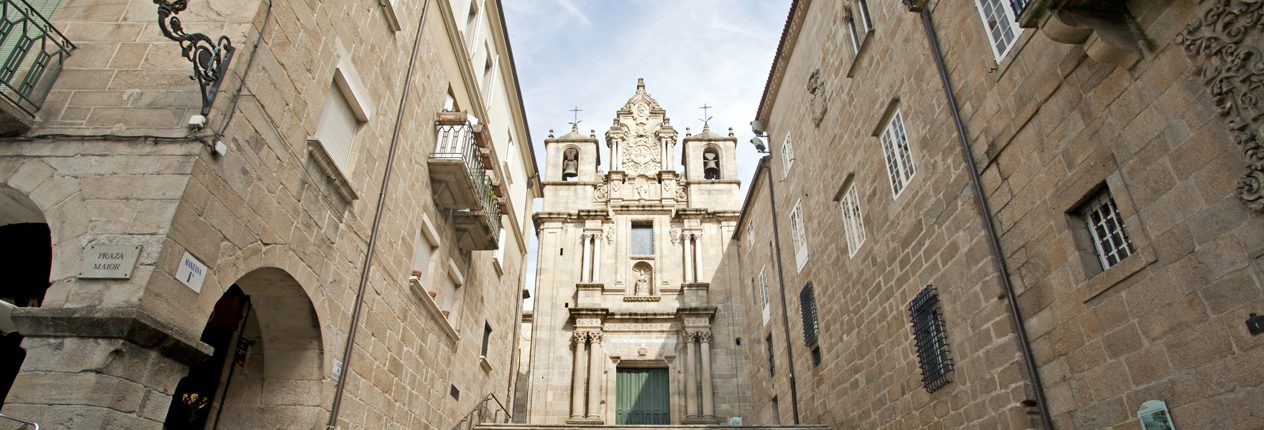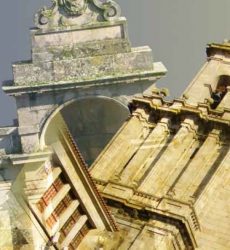
Church of Holy Mary, Mother of God
Rúa Santa María, 1, 32005
Visits by prior reservation (minimum 10 people) Tel +34 608 505 531
Site of the original cathedral of Ourense, from which the columns of the façade remain.
Es Iglesia de Santa María Madre | GL Igrexa de Santa María Nai
Its façade, made in a restrained Baroque style (18th century), does not reveal the importance of this medieval church, located most likely in the site of the previous cathedral of Ourense. The only remains of this cathedral are some columns and some marble-like capitals preserved in the present façade and originating in the 5th or 6th century. From an inscription on the side, it is known that the church was rebuilt in 1084 after its devastation, and again in 1772. The church can’t be understood without its monumental stairway, which connects the secluded Magdalene Square with the Main Square.
Inside, there is an altarpiece made of wood -in its natural colour- in Churrigueresque style, which houses the statue of Holy Mary, Mother of God, patron of the guild of tailors, from the 16th century. This statue is taken out in a procession on Holy Saturday, traditionally conducted by tailors, and also on Easter Sunday, when it stars in the so-called Desplante (Ceremony of the Affront). This curious ritual evokes the conflicts that for years confronted the bishop and the municipal corporation in the city.
The church can’t be understood without its monumental stairway, in which each Easter Sunday takes place the Ceremony of the Affront.
Probable site of the original cathedral of Ourense: it was devoted to a French saint, St Martin of Tours, whom tradition attributes the miraculous healing of the son of Suebi King Chararic, who in gratitude turned him into the saint patron of the city. This first church will be devastated by Norman and Mozarabic incursions and rebuilt in 1084, as a side inscription reads. That basilica was demolished in 1722 to erect the new church (as it appears on another inscription in the same place) in Baroque style, on the initiative of bishop Marcelino Siuri, who increased the stonework. This explains why the bishop’s palace is at its side.
From the first basilica only a series of double columns in the second and third floor remain, of late-roman or visigoth style, similar to those of the church of St Columba of Bande. It has three naves and three lanes framed by fluted pilasters. In the upper body, there are heraldic motifs, a pediment and two towers on the sides. Inside, a Latin cross floor with ribbed vault, rectangular header and a projecting transept.
It should also be noted, in an altarpiece of the transpept nave to the right, a statue of the Pieta (1775, made in polychrome wood, rococo style) of remarkable quality and pathos. In the predella of the altarpiece we may find the recumbent body of Christ.
Visits by prior reservation (minimum 10 people): telephone +34 608 505 531
Schedule
Visits by prior reservation (minimum 10 people) Tel +34 608 505 531
Two proposals for discovering Ourense’s bimillennial history through its main monuments and landmarks.

